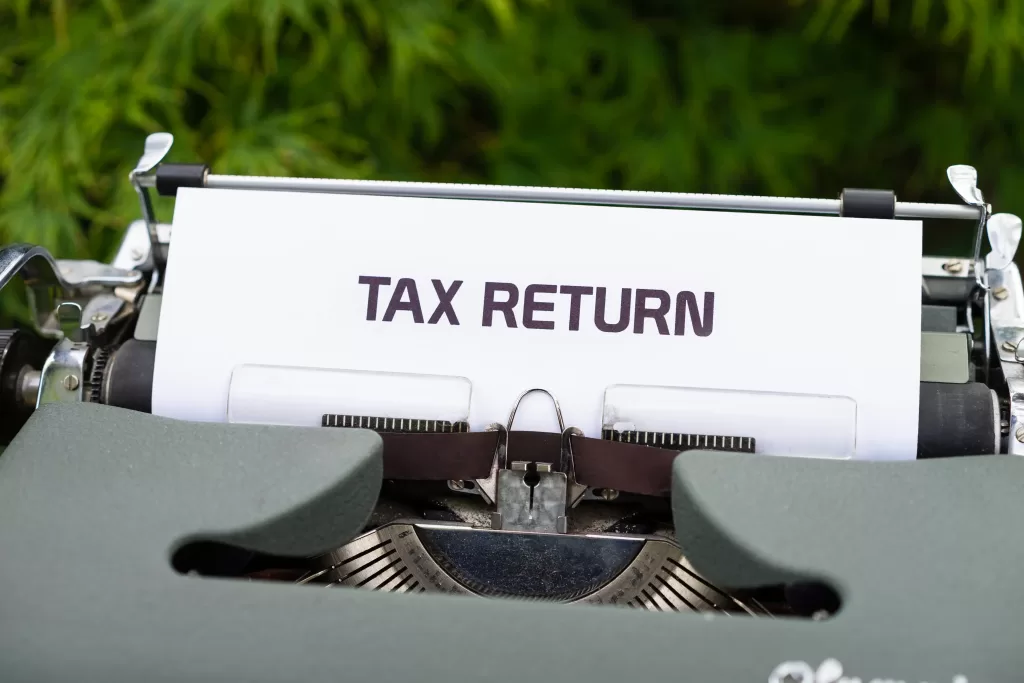Five Proven Ways to Decrease Taxes
Table of Contents
ToggleBenjamin Franklin’s famous quote, “In this world, nothing can be said to certainly exist, except death and taxes,” is just as true today as when it was first said. The only thing that has changed over the years when it comes to taxes is the taxation law-with so many options available, we don’t need any more pain caused by our payments!
For many people, tax season can be a stressful and overwhelming time. However, being organised and prepared can help make it less painful. This means keeping track of your income and capital gains throughout the year. Not only will this make filing your taxes easier, but it may even increase your potential refund. By taking a deep breath and getting organised, you will be thanking yourself in the future.
Ways to decrease taxes you pay
Keep detailed records
In Australia, having proper records is crucial for completing tax returns. This is true whether you are doing your own return or working with a tax professional. To fulfil your record-keeping obligations, you must have appropriate receipts for expenses and accurately track and categorise your income.
To ensure the accurate calculation of capital gains tax (CGT), records must be kept for any assets sold or purchased during the tax year. By maintaining these records, we can fulfil our responsibility to file a complete and accurate tax return in Australia. Let’s prioritise record keeping to fulfil our duty and complete our taxes correctly and on time.
It is crucial to keep receipts for all business or work-related expenses as they serve as proof and documentation of the expenses incurred throughout the year. Without these receipts, it may be challenging to claim tax deductions and exemptions.
It is important to have your tax-related receipts organised and easily accessible in order to properly file your tax returns. Failing to track these receipts can result in incorrect filings and potential fines or penalties from the government. Additionally, if you are in the highest tax bracket, claiming a $100 deduction can save you 47% in taxes.
To report your income and capital gains accurately on your tax return, you must keep track of all sources of income you have earned throughout the year, as well as any financial transactions or assets that may result in a capital gain. This involves maintaining records of all income sources, such as bank statements and pay stubs; tracking purchases and sales of assets that may result in a capital gain; and having receipts for expenses and deductions you plan to claim on your tax return.
Maintaining consistent records throughout the year can help you decrease your taxes and fulfill your obligations as a law-abiding citizen. Using a record-keeping tool such as Mint or Quicken can assist in tracking your income sources and financial transactions. By keeping detailed records, you can stay on top of your tax obligations.

Claim available tax deductions
To decrease taxes in Australia, you can claim tax deductions, which are available for a range of activities, such as donating to charity, investing in education, and paying for work-related expenses. These deductions can help lower your overall tax burden.
One of the most commonly known methods for lowering taxes is by making donations to registered charities or other qualified organisations. This allows individuals to claim a tax deduction for the donated money or goods, providing some relief from the high cost of living in Australia.
In Australia, you can potentially claim tax deductions for continuing education and training programs that help you advance in your career. Another option is income protection, which is a common work-related deduction that can provide financial stability during difficult times. Overall, there are many potential tax deductions available, so be sure to consider all options to maximise your savings.
It is important to note that the allowable work-related expenses may vary greatly depending on one’s profession. For more information, please visit the Australian Tax Office website at www.ato.gov.au.
Consider Salary Packaging
Salary packaging is a tax-saving strategy that allows Australian workers to receive non-cash benefits in place of a taxable salary. This can lower their taxable income and reduce the amount of taxes they owe. In addition, salary packaging can provide tax breaks on commonly used items such as mortgage payments, car loans, and private health insurance. Overall, salary packaging is a beneficial option for individuals looking to decrease their taxes and keep more money in their pockets.
Fringe Benefit Tax (FBT) is a tax on non-cash benefits that is applied at the highest marginal tax rate, which means that receiving these benefits does not lower your overall tax burden. If you are a low-income earner, FBT may even cause your taxes to increase. However, there are some benefits that are treated favourably under FBT rules, so it may still be beneficial to consider these types of benefits when negotiating your salary package.
Beneficial salary packaging options may include obtaining a mobile phone, laptop, or novated lease on a vehicle.
While salary packaging can provide benefits for some individuals, it is not a suitable option for everyone. Additionally, there are certain paperwork and procedural requirements that must be met to establish an effective salary packaging arrangement. It is recommended to consult with a professional adviser before implementing this strategy.

Contribute to Superannuation
Making superannuation contributions can help lower your taxable income and increase your retirement savings. By contributing to your super, you can take a tax deduction for the amount contributed, allowing for less tax on your superannuation and more funds available for your retirement.
Superannuation earnings are taxed at a lower rate than other investments, allowing your money to grow faster in a super fund. This makes superannuation a highly tax-effective way to save for retirement and reduce taxes.
By making superannuation contributions, you can potentially lower the amount of tax you owe on your investments due to the favourable tax rate of up to 15% on investments within a super fund. However, these contributions are subject to certain rules and regulations.
If you make salary-sacrificed or pre-tax concessional contributions into your super, they will typically be taxed at 15%. However, if your income plus concessional contributions exceeds $250,000, your contributions may be taxed at a rate of 30%. Additionally, some individuals may be eligible to claim a tax deduction for their contributions to super.
In order to claim a deduction for personal superannuation contributions, you must first fill out and submit the Notice of Intent to Claim or Vary a Deduction for Personal Contributions form (NAT 71121) and receive confirmation from your fund. Additionally, there are specific eligibility requirements that must be met.
It is important to consult a financial planner regarding the complex rules regarding tax deductibility and contribution limits for superannuation.

Manage capital gains
If you sell an investment for more than what you paid for it, there is a possibility that you may have to pay capital gains tax (CGT). This should be taken into account if your total capital gains for the year exceed your losses. When you make a profit from selling an investment, it is considered a capital gain. For non-professional investors, capital gains must be reported on your annual income tax return. Assets purchased before September 20, 1985 are not subject to CGT.
If you sell an asset for less than its purchase price, you will have a capital loss. If your capital losses for the year are greater than your capital gains, you will have a net capital loss for the year.
If you are facing a potential capital gains tax liability, there are several strategies you could consider to lower the amount of taxes you need to pay.
Keep an investment for at least 12 months
Holding investments for the long term is crucial for reducing capital gains tax. By owning assets for more than 12 months, the tax rate on profits from their sale is reduced by 50% compared to selling within a year. While this can be beneficial, it is important to exercise caution.
Delay any gains until the new financial year
If you’re thinking of selling profitable assets, it’s worth considering the Australian tax system, which is a little more complicated than others. By delaying the sale until after the end of the financial year or longer, you can avoid paying CGT for another 12 months. However, you will eventually have to pay it, so it’s important to consider whether freeing up short-term cash flow is worth it for your specific situation.
Use carry-forward tax losses to reduce CGT
If you incurred capital losses in previous tax years that have not yet been used to offset capital gains, you may be able to carry those losses forward to future tax years to help reduce any potential CGT liability. It is best to consult with your accountant or tax professional to see if this option is available for your specific situation. You can also review your past income tax returns or ask your accountant for assistance in determining your eligibility for this option.
This information should not be considered as a substitute for personalised tax advice. It is recommended to consult with a professional who can assess your specific situation and provide tailored guidance on tax-reducing strategies. The effectiveness of these strategies may vary depending on various factors.









